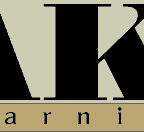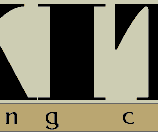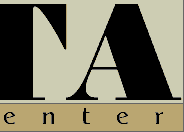 |
 |
 |
 |
|
|||||||||||||||||||
 |
|
|
|||||||||||||||||||||
| REFERENCES
1. Kajiwara, Naoto, "Part 1, Introduction: The History of The Akita Dog," The Akita Journal, p. 26, Aug./Sept. 1977, The Akita Journal Publications. 2. Naora (Nagara), Nobuo, "The New Stone Age," (In Japanese) Shuryo (Hunting) p. 131, 1968, Hosei Daigaku Shuppankyoku (Hosei University Publishing Dept.), Tokyo, Japan. 3. Hiraziumi, Ryonosuke, "History," (In Japanese). Akitainu (Akita Dog) p. 16, 1987, Seibundo Shinkosha Publishing Co., Ltd., Tokyo, Japan. ISBN 4-416-58723-6-C0376. 4. Seki (Mori), Tadao, "Japanese Dogs That Appear in Ancient Art", (In Japanese) Nihonken Taikan (A Manual of The Japanese Dog), p. 4, 1953 (Reissued 1987), Seibundo Shinkosha Publishing Co., Ltd., ISBN 4-416-58700-7 C0076. 5. Saito, Hirokichi, "Japanese Dogs, Their History & Development," (In English). Nihonken Taikan (A Manual of The Japanese Dog) p. 239, 1953 (Reissued 1987),Seibundo Shinkosha Publishing Co., Ltd., Tokyo, Japan. 6. Ibid., p. 239. 7. Ibid., p. 238. 8. Hiraiwa, Yonekichi, The History and Current Status of Japanese Dogs," (In Japanese). Inu wo Kau Chie (Ideas On Raising A Dog) p. 227, 1972, Ikeda Shoten Publishing Co., Ltd., Tokyo, Japan. 2045- 000507-0316. 9. Ibid., p. 228. 10. Ibid., p. 229. 11. Kajiwara, Naoto., "My Thoughts On The Akita Dog, Part III, The Tokugawa Period (1615-1867)", p. 16, Dec./Jan. 1978. The Akita Journal Publications. 12. Kuga, Koun, "Seibold and Japanese Dogs, Mountain Dogs and Wolves" (In Japanese), Aiken No Tomo p. 388, 1989, Seibundo Shinkosha, Tokyo, Japan. 13. Ishihara, Katsusuke. Personal communication in Tokyo on Sept. 25, 1977. 14. Kajiwara, N., The Akita Journal, "Part IV, The Meiji Period (1868-1912)," p. 13, April/May 1978. 15. Kajiwara, N., The Akita Journal, "Part V, The Taisho Period (1912-1925)," p. 15, April/May 1978. 16. Kajiwara, N., "Part VI, The Early Showa Period (1925-1945) ," The Akita Journal, p. 27, June/July 1978. 17. Kajiwara, N., "Part I, Introduction" The Akita Journal, p. 21, August/ September 1977. 18. Kyono, Hyoemon, "The Large Type Dog: The Akita Dog," (In Japanese) Nihonken Taikan (A Manual of The Japanese Dog), p.21, 1953 (Reissued 1987), Seibundo Shinkosha, Tokyo, Japan. 19. Okada, Mutsuo, "From My Akifa Dog Album (41), Seeking Oyajiro's Footsteps, (Part 1)" (In Japanese), Aiken Journal 308:51- 54, (June) 1985, Shin-Journal-sha, Tokyo, Japan. 20. Kudo, Katsushiro, "The Medium Type Iwate Dog (Akita Matagi Dog)," (In Japanese) Nihonken Taikan (A Manual of The Japanese Dog), p, 47, 1953 (Reissued 1987), Seibundo Shinkosha, Tokyo, Japan. 21. Saito, Hirokichi, "Japanese Dogs, Their History & Development," (In English)), p. 235, 1953 (Reissued in 1987), Seibundo Shinkosha, Tokyo, Japan. 22. Kimura, Tatsuo, "Rambling Through Japan, Fall 1992," Akita World, p. 89, January/February 1993, Hoflin Publishing Co., Wheat Ridge, Colorado. 23. Kajiwara, N., "Part IV, The Meiji Period (1858-1912)," The Akita Journal, p. 13, February/March 1978. 24. Kajiwara, N., "Part VI, The Early Showa Period (1925-1945)" The Akita Journal, p. 26, June/July 1978. 25. Personal communication with Katsusuke Ishihara in Setagaya.Tokyo on Sept. 29, 1977. 26. Ishihara, Katsusukev, "Akitainu Hyojun Seltei To Genasai Made No Keika" ("The Establishment of The Akita Dog Standard and Recent Advances") (In Japanese), Akitainu Tokuhon (Akita Dog Book), p. 90, 1963, Seibundo Shinkosha, Tokyo, Japan. 27. Takaku (Takahisa), Heishiro, "Chapter TWO: The Establishment of The Japanese Dog Standard (In Japanese)." The Nippon Inu No Kaikata (How To Raise Japanese Dogs), pp. 45-122. 1933, Shunyodo, Tokyo, Japan. 28. Nakamura, Katsuichi (Shoichi), "The Japanese Dog Standard," Shumi No Inu (Dogs As a Hobby) (In Japanese), pp. 69-71, April 934, Kobunsha, Tokyo, Japan. 29. "Development of the Japanese Dog Standard (In Japanese)." Nipponken Hozonkai Soritsu Gojyushunenshi (Jokan) [Annals of Nippo's 50th Anniversary (First of Two Volumes)], p. 77-78, 1978. 30. Saito, Hiroshi (Hirokichi, Kokichi) et. al., "Symposium: A Candid Discussion On Japanese Dogs (In Japanese)," Aiken No Tomo, pp. 44-50, April 1954, Seibundo Shinkosha, Tokyo, Japan. 31. A letter written in English to the leading kennel clubs in Europe and America, in 1935 by Ichiro Hata, Hon. Foreign Secretary of the Nippon Inu Hozonkai (NIH) (Nihonken Hozonkai) (Nippo) (Nichiho), Nippon Hozonkai Soritsu Gojyushunenshi (Jokan) [Annals of Nippo's 50 Anniversary (First of Two Volumes)?. 103-104, 1978. 32. Higuchi, Takio, "Reconsidering The Timeless Form of The Kishu Dog (In Japanese)," Aiken No Tomo, p. 508, June 1990, Seibundo Shinkosha, Tokyo, Japan. 33. Okada, Mutsuo, "Animal Photographer: Toju Hirashima, Part 5 (In Japanese)." Aiken No Tomo, p. 401, December 2000, Seibundo Shinkosha, Tokyo, Japan. 34. Hiraizumi, Ryonosuke, "Commentaries on the Akita Dog Standard (of the Akitainu Hozonkai(Akiho) (In Japanese)." Akitainu Tokuhon (Akita Dog Book), p. 35, 1963, Seibundo Shinkosha, Tokyo, Japan. 35. Ishihara, Katsusuke, "Comments On The Establishment of The Akita Dog Standard and Its Current Status (In Japanese)," Akitainu Tokuhon (The Akita Dog Book), p. 90, 1953, Seibundo Shinkosha, Tokyo, Japan. 36. Toyoshima, Kiyoji, "Commentaries On the Akita Dog Standard and Body Standard (In Japanese)," Akitainu Tokuhon (the Akita Dog Book), p. 62, 1963, Seibundo Shinkosha, Tokyo, Japan. 37. Aiken No Tomo Editorial Dept., "The All Japan Akita Dog Union (J.A.S) (In Japanese)." Akitainu Tokuhon (Akita Dog Book) p. 235, 1963, Seibundo Shinkosha, Tokyo, Japan. 38. Personal communication at JKC headquarters in Tokyo with Sadao Yukawa and Hiroshi Kamisato. Also see Akita World p. 92, Jan./Feb. 1993.39. Hiraizumi, Ryonosuke, "A Discussion on The Establishment of the Akita Dog Standard (In Japanese)." Akitainu Tokuhon (The Akita Dog Book), p. 39. 1963, Seibundo Shinkosha, Tokyo, Japan. 40. Watanabe, Hajime, "Commentaries On The Establishment of the Standard for The Large Japanese Dog (In Japanese)." Akitainu Tokuhon (The Akita Dog Book), p. 72, 1953, Seibundo Shinkosha, Tokyo, Japan. 41. Linderman, Joan M. & Funk, Virginia, "The Breed Standard in America," The Complete Aktta, pp. 87-89, 1983, Howell Book House, New York. 42. Kajiwara, N., "Part VI, The Early Showa Period (1925-1945)," The Akita Journal p. 28, June/July 1978. 43. Ishihara, Katsusuke. Personal communication in Setagaya, Tokyo on September 25, 1977. 44. Kajiwara, N., "Part VI, The Early Showa Period (1925-1945)," The Akita Journal, p. 29, June/July 1978. 45. Kajiwara, N., "Part VII, The Late Showa Period (1946-1959)," The Akita Journal, p. 14, Aug./Sept. 1978. 46. Ibid., p. 15. 47. Okada, Mutsuo, "Has The Akita Dog Been Restored (Resurrected)?, Part I," Akita World, p. 75, July/August 1999, Hoflin Publishing, Inc., Wheat Ridge, Colorado. 48. Nakashima, Gaifu, "On The Tosa (Fighting) Dog (In Japanese)," Nihonken Taikan (A Manual of The Japanese Dog), p. 214, 1953 (Reissued in 1987), Seibundo Shinkosha, Tokyo, Japan. 49. Kajiwara, N., Part VII, p. 15. 50. Hiraizumi, Ryonosuke, "Famous Dogs From Akita (In Japanese)," Nihonken Taikan (A Manual of The Japanese Dog), p. 154, 1953 (Reissued in 1987), Seibundo Shinkosha, Tokyo, Japan. 51. Okada, M., "Has The Akita Dog Been Restored (Resurrected)?" Part I, Akita World, p.68, July/August 1999. 52. Sato, Naoei, "The Form of The Akita Dog (In Japanese)." Akitainu (The Akita Dog), p. 169, Seibundo Shinkosha Publishing Co., Ltd., Tokyo, Japan. 53. Okada, M., "A History of The Kongo Line," Akita World, p. 46. Jan./Feb. 1994, Hoflin Publishing Co., Wheat Ridge, Colorado . 54. Kajiwara, N., "Part VIII, The Later Showa Period (1960- ), "The Akita Journal, p. 16, Winter 1979, The Akita Journal Publications. 55. Okada, M., "Goromaru-go, The Ancestor Dog That Rejuvenated The Akita Dog," Akita World, p. 85, March/April 1997. 56. Hiraizumi, R., "Akita Dogs of The Future (In Japanese)." Aiken No Tomo, p. 520, July 1991, Seibundo Shinkosha, Tokyo, Japan. 57. Okada, M., "Looking At The Akita Dog, First of Two Articles," Akita World, pp. 77, 80, July/August 1996. 58. Ogasawara, Ichiro, "Helen Keller and Akitas," Los Angeles Akiho Branch Manual, pp. 29-32, August 1970. 59. Okada, M., "Seeking The Roots of Akita Dogs Aboard," Akita World, pp. 57-58, May/June 2000. 60. Okada, M., "An Analysis of The Akita Dog (In Japanese)." Aiken Journal, No. 494:65, December 2000, Shin-Journalsha, Tokyo, Japan. 61. Linderman, Joan M. and Funk, Virginia, The New Complete Akita, p. 72, 1994, Howell Book House, New York. 62. Kamisato, Hiroshi, "Division of The Akita Dog Into Two Breeds By The FCI (In Japanese)." Aiken No Tomo, pp. 1257-1259, January 2000, Seibundo Shinkosha, Tokyo, Japan. history.aca Updated 05/29/2002. |
|||||||||||||||||||||||
Home | Our Dogs | Photo Gallery | Special Wins | Memory Lane | Mr. Hirose´s visit | AW Interview | Contact | Guestbook |
|||||||||||||||||||||||
|
|
|||||||||||||||||||||||